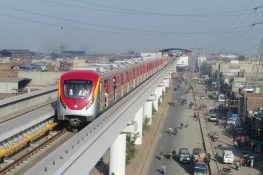Surge in First Quarter Borrowing
Pakistan’s federal government borrowed a total of Rs 515 billion during the first quarter of the 2025-26 fiscal year, according to the latest monthly report by the Economic Affairs Division (EAD). This represents an almost 70% increase compared to Rs 363 billion borrowed during the same period last year.
The borrowing was distributed across the first three months as follows:
-
July 2025: Rs 198 billion
-
August 2025: Rs 192 billion
-
September 2025: Rs 124 billion
Foreign Loans and Agreements
In September 2025 alone, Pakistan secured $43.66 million in new loans, of which $25.96 million came through bilateral and multilateral agreements. These arrangements are part of Pakistan’s ongoing efforts to finance its budget deficit and support development projects.
Issuance of New Pakistan Certificates and Grants
During the same period, the government also issued New Pakistan Certificates worth $17.7 million. Additionally, grants amounting to $4 million were received from international partners between July and September. These instruments and grants help the government meet immediate liquidity needs without over-relying on commercial borrowing.
Context and Fiscal Outlook
The Economic Affairs Division has projected that the government will borrow a total of Rs 5,777 billion in the 2025-26 fiscal year. This borrowing is intended to fund infrastructure projects, social programs, and ongoing fiscal obligations.
Experts note that while external borrowing provides short-term relief, Pakistan’s rising debt levels raise concerns about debt sustainability. The sharp increase in first-quarter borrowing signals ongoing fiscal pressure, highlighting the government’s dependence on both domestic and international financing to maintain economic stability.
Policy Implications
Analysts suggest that careful management of borrowed funds and transparent reporting will be critical to ensure that these resources support economic growth rather than exacerbating debt risks. As Pakistan navigates complex fiscal challenges, the government faces mounting pressure to implement reforms and improve revenue generation.















